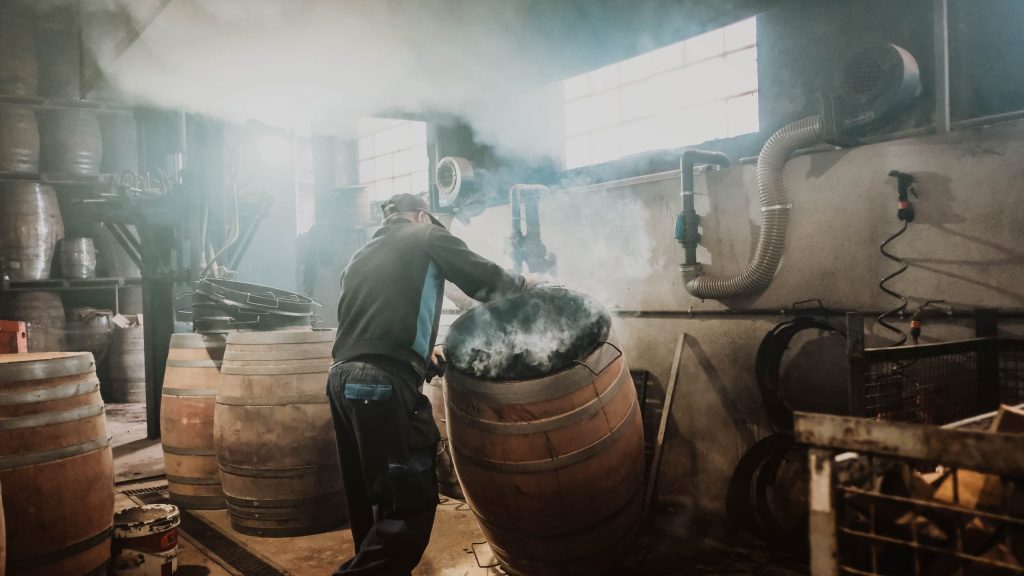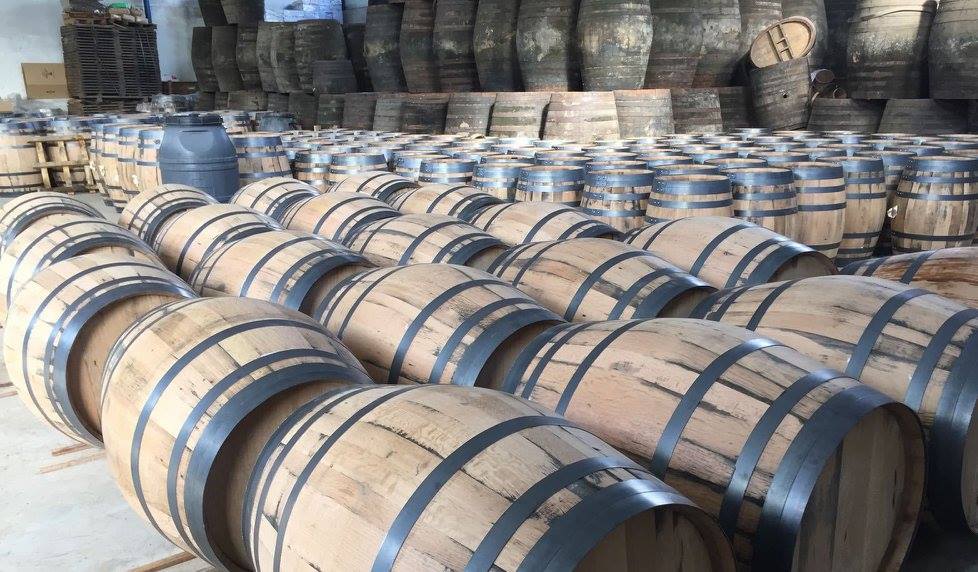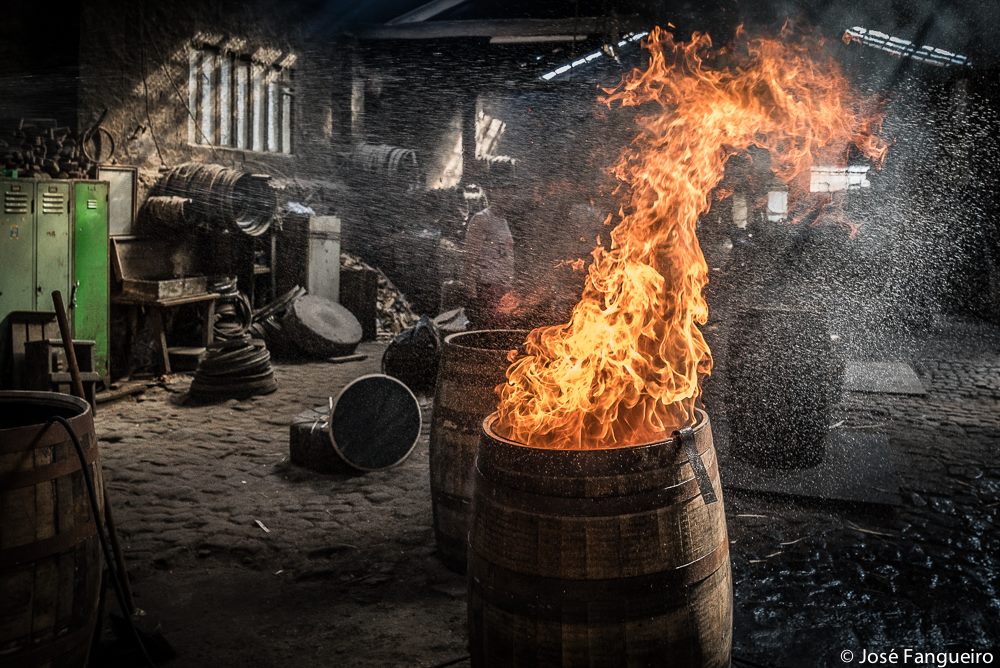We offer four different levels of char for the new barrels we supply – light, medium, heavy and extra-heavy (or alligator). These different levels of char are achieved by how long the inside of the barrel is burnt for and the process is a very interesting one. The char is a different process to the toast, as the toast is applied to help bend the staves to form the barrel shape whilst the char is applied once the barrel is complete. Generally the used port wine barrels we supply are not recharred as customers want to preserve the residue from the port wine (or sherry, madeira, muscatel and other used barrels we supply)was previously in the barrel to the maximum extent. When we make smaller used barrels however, we have to gently toast them in order to re-bend the staves as they have to be cut down to size from larger barrels.
Whilst some modern cooperages have an automated process to control the char level applied to barrels, we still do it the old fashioned way. So we remove the head and bottom of the barrel and heat up the inside over a fire until the wood is hot to touch; then one of our most experienced coopers will sprinkle saw dust into the open barrel to create an instant fireball which will singe the inside of the barrel to give the char effect. Just how much sawdust to apply is more art than science, but the right amount needs to be added until the cooper is satisfied with the char level, then water can be sprayed into the barrel to stop the process and the barrel left to cool down.
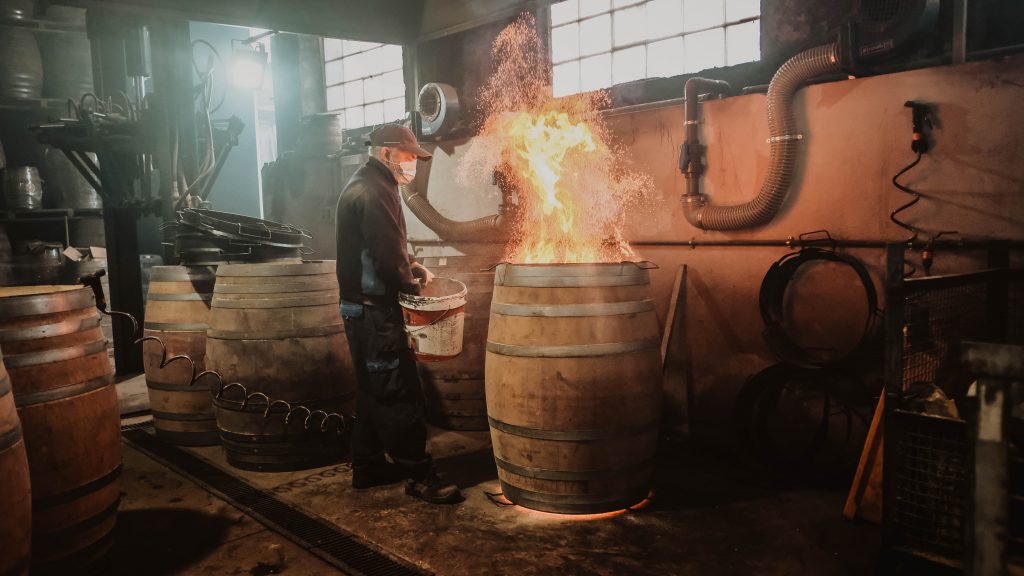
To make the fire that heats the barrels prior to the char we use off-cuts from the oak staves and of course the saw dust we use is also generated by cutting the staves. Many more modern cooperages use gas for this purpose as it is much easier to control, but we like to use only natural wood flame to keep the barrels completely natural. If you are in our cooperage to witness a barrel being charred, one of the surprises is that the barrels do not smell of smoke immediately after charring, rather you will smell more vanilla, spice and toffee as the cellulose in the wood is transformed into wood sugars.
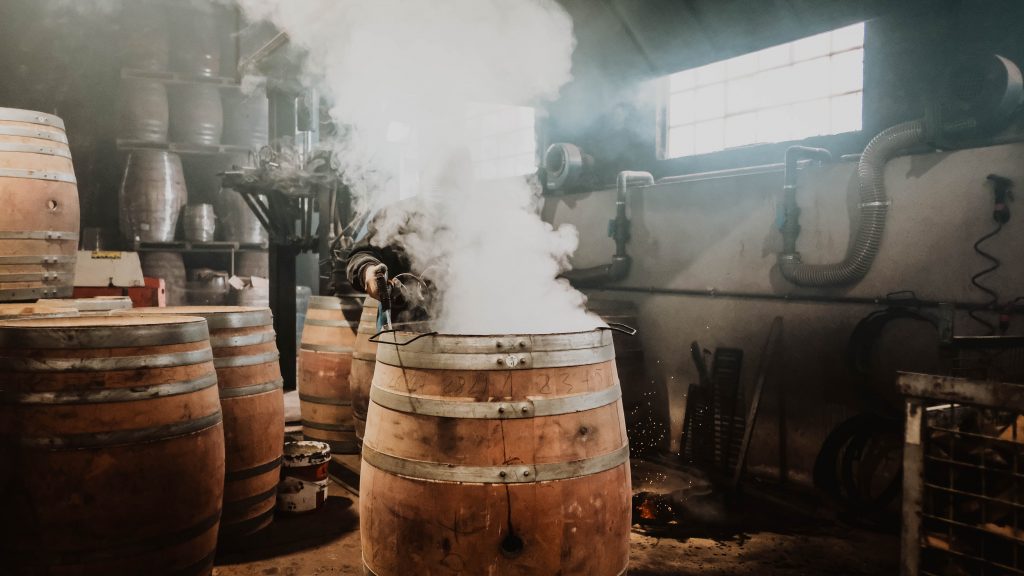
The role of charring is not to impart a smokey nose to a whisky (or whatever will be aged in the barrel), rather it is there to encourage the wood give up its natural flavours which are only revealed under extreme heat. And an added bonus is that the char acts as a carbon filter which helps to filter out unwanted sulphur compounds for example. If you are interested in seeing (and smelling) the char process for yourself, you will always be welcome to visit and check out our barrel making process for yourself.

